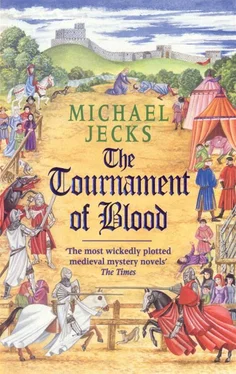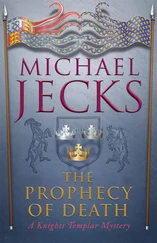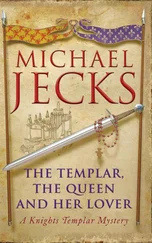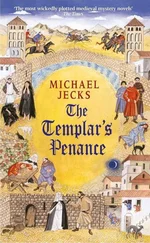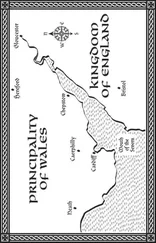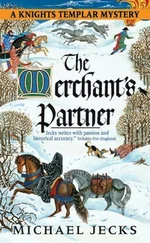For those who wish to find out more about knights and tournaments, there are remarkably few good books. One I would recommend is Chaucer’s Knight by Terry Jones, because although it tells of a time a few decades after this, it is so readable and informative that it is invaluable. I would also recommend Chivalry by Maurice Keen, an excellent, scholarly work that explains much about the motivations of knights, squires and heralds. I can also highly recommend The History of the Tournament in England and France by F. H. Cripps-Day – but I fear that few will be able to find it, since it was published in 1918.
The main setting for this story is in and about Okehampton Castle. I have always been very keen to pick locations which readers can visit and ideally imagine how things might have been, and Okehampton gives a better impression than many other places.
Tournaments would often have been held in market squares – for the simple reason that contestants and spectators needed access to food, drink, clothing and weaponry. Pictures and woodcuts show townsfolk looking on as a pair of knights charge each other, or as a small army battered at each other with axes, swords or maces. All about can be seen shops and hucksters, clearly showing that the market continued while the knights fought.
However, I think it’s likely that a warlord like Hugh II would have wanted to be closer to the comforts of his castle than in a small town like Okehampton. He would, I think, have wanted to stage a tournament in a more magnificent setting, somewhere with the potential for processions, for drama and display. The castle is perfect from this perspective.
I have described the whole setting in the story itself, but perhaps a brief outline of the lands beneath the castle walls would be helpful. In effect it is a series of meadows. The first, at the eastern end, is a tapering area which is not quite so large as the others, bounded on one side by the river and the other by the castle. The next is a kind of rough oval, again with the river on the southern side, but following the contour of the castle’s ridge on the other. Finally there is a third area, which this time is less long and thin and is instead broader, if a little shorter. There is one ford up near the castle’s front gate, and a second in the third meadow.
The castle has been imaginatively protected from collapse by English Heritage without detracting from its character. The meadowland beneath the castle, lying within the sweep of the river, is flat and broad. Walking over it, it’s easy to imagine the small fair set up, trestles all over with pots and jugs of ale or wine, barrels broached and tapped, pies and poultry cooking over smoking fires, bread being offered by maids with baskets, the odd hawker, a beggar or two at the gate, while further on would be the merchants with their bolts of silk and velvet, trying to tempt the knights into buying presents for their wives, their lady loves, or more likely for themselves, to make them appear still more gaudily marvellous.
Okehampton Castle has suffered dreadfully over the centuries. It was built soon after Hastings, by Baldwin Fitz Gilbert, Sheriff of Devon under William the Bastard, and was mentioned in Domesday. It became a de Courtenay property when Robert de Courtenay married Baldwin’s great-great-granddaughter in 1172. The earls of Devon were the de Redvers family, but the male line died out in the 1200s. Hugh de Courtenay married one of the de Redvers women, and subsequently became Earl in her right in 1335.
There are enormous cracks in the walls, and the outer curtain wall to the north has all but disappeared, but this little castle has a wonderful feel to it, especially if one makes the laborious ascent to the old tower on top of the steep spur. From there you can peer down at the yard before you, or gaze down the steep hill toward the meadows, up at Dartmoor, or at the line of the old roadway. It may have been a small fort, but lying as it did on the main road from Cornwall, it had a tremendous strategic importance. It is well worth a visit.
After the forgoing, the more vigilant readers will have noticed that I spelled the town’s name as ‘Okehampton’ and not ‘Oakhampton’.
When I wrote the first of the Templar series, I wanted to use old spellings of place names. I thought they were more interesting, but to my surprise a number of people have complained or have accused me of not knowing the area because I can’t spell the town’s name properly. For them, all I can say is that I wanted to use the names as they would have been spelled in the past. In the same way I have stuck in the main to old-fashioned spelling of people’s names.
For those who dislike the ‘Oak’ spelling, I hope that seeing the more modern spelling here in the Author’s Note will satisfy them. After all, the Author’s Note is written in and about the twenty-first century – it’s only right that Okehampton should be given its contemporary spelling!
With a work of this type the writer has to study many aspects of history, from methods of fighting to the clothing worn, to how Okehampton Castle would have looked in the 1320s. I am hugely grateful as always for the help of the Exeter University Library staff and the staff of the Devon and Exeter Institution, and any errors are entirely my own.
I’ve found it enormously enjoyable getting to grips with tournaments and I only hope you find the story as interesting to read as it was for me to write.
Michael Jecks
North Dartmoor
April 2000
Benjamin Dudenay, known to most people as ‘Ben the money-lender’, was not popular, so his murder caused no distress except to his three outstanding creditors, whose demands for compensation were stolidly rejected by his widow, Maud. She was content to live on the proceeds of his wealth, feeling no need to maintain his business, and steadfastly claimed impoverishment whenever bailiff or beadle asked that she settle the dead man’s debts.
Fortunately Benjamin’s death was much easier to arrange than his murderer had anticipated. And it was equally fortunate that the killer was unknown, that he had been away from the city of Exeter for so long that his victim could not anticipate an attack.
It had been such a shock to see the banker after so many years, that Philip Tyrel dropped his cudgel.
His life had altered so much. Even his name had been changed now, though he still thought of himself as Philip, but to see Benjamin again made the years fall away.
Somehow Philip had expected the fellow to be dead. Benjamin wasn’t a young man when he’d killed his victims and Philip had momentarily thought he must be mistaken – it must be a trick of the light that made this fellow look like Benjamin. Yet he followed him all the same, wondering if his memory was playing games with him after so many years. Then, when the money-lender entered a hall, Philip heard him accosted by name – Benjamin Dudenay – and he had to lean against a wall to prevent his falling. This was the devil who had ruined Philip’s life in the pursuit of his own profit. This was the fiend who made money from the deaths of men, women and children.
Philip could have walked away from Exeter and put the place from his mind if he had not seen Benjamin, but now he felt revulsion fill his soul.
He had never before harmed a man, let alone killed one, yet when he saw Benjamin later, strutting down the street and smiling suavely at other leading citizens, saw him arrogantly dropping coins into the alms bowls which the beggars thrust towards him, Philip felt his anger rising. As he stood staring at the rich building that proclaimed Benjamin’s importance, his blood called out for vengeance.
Читать дальше
